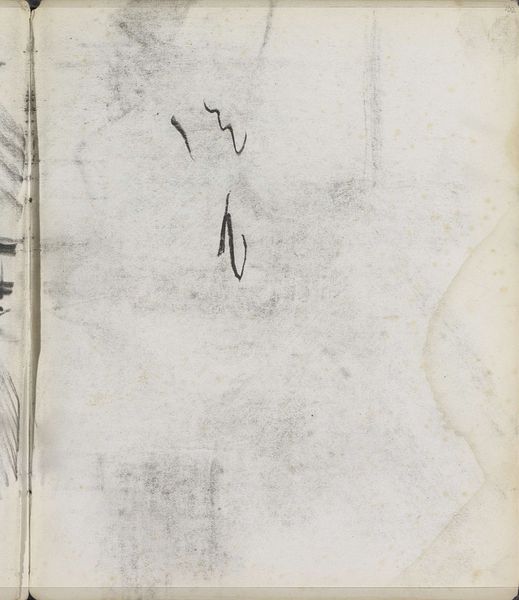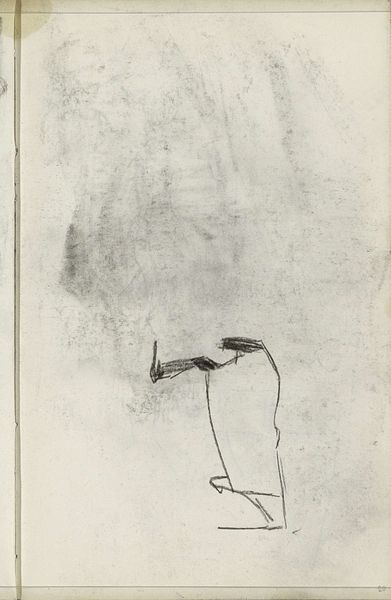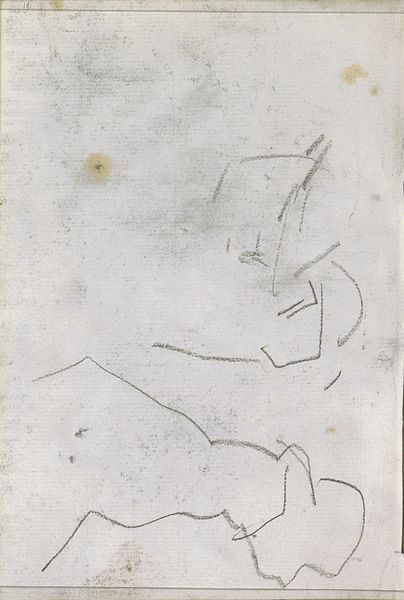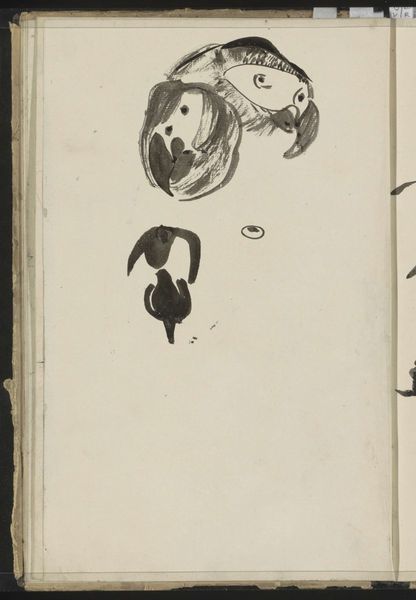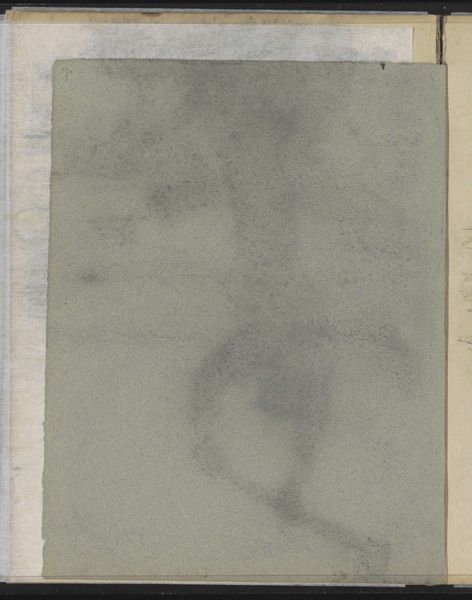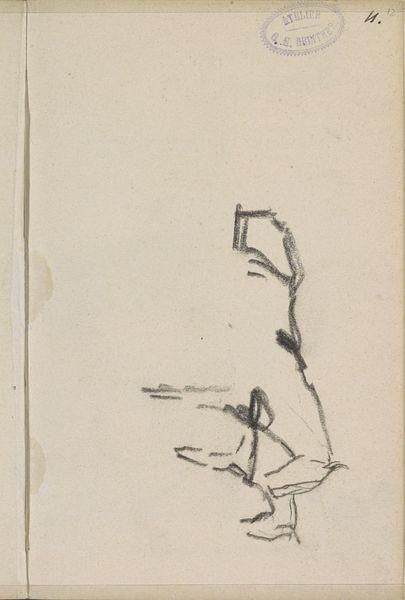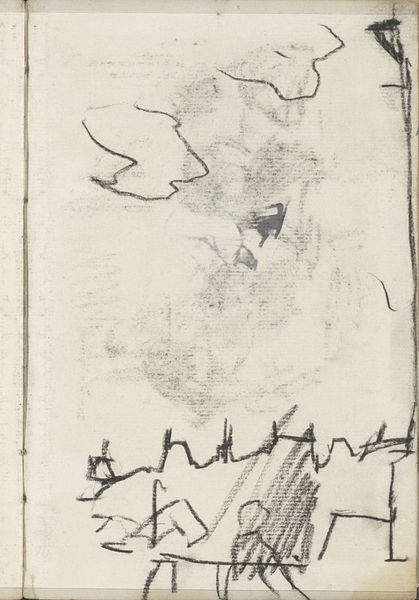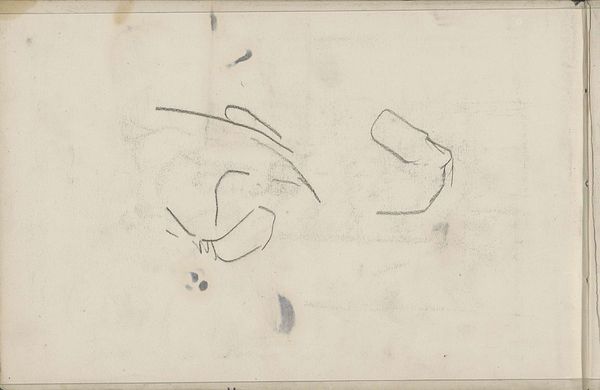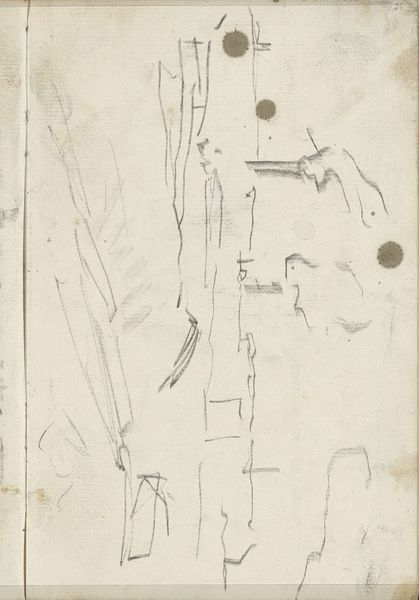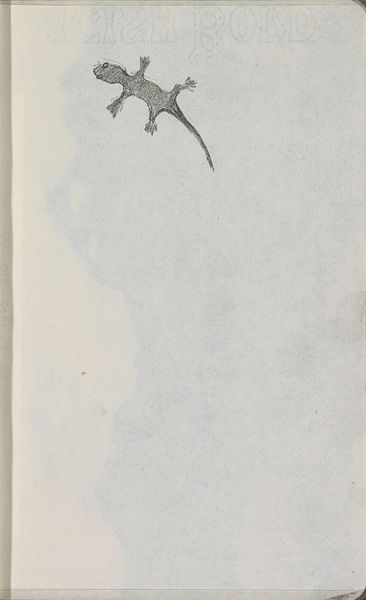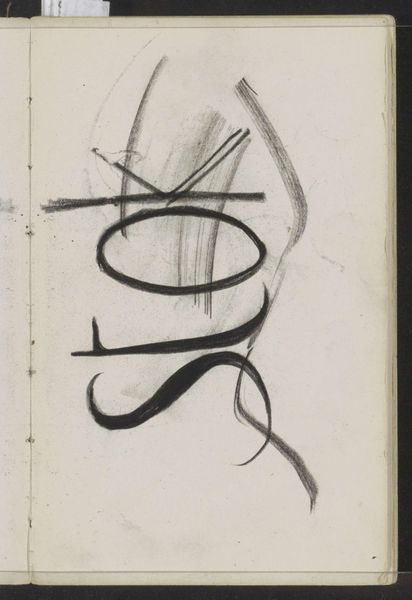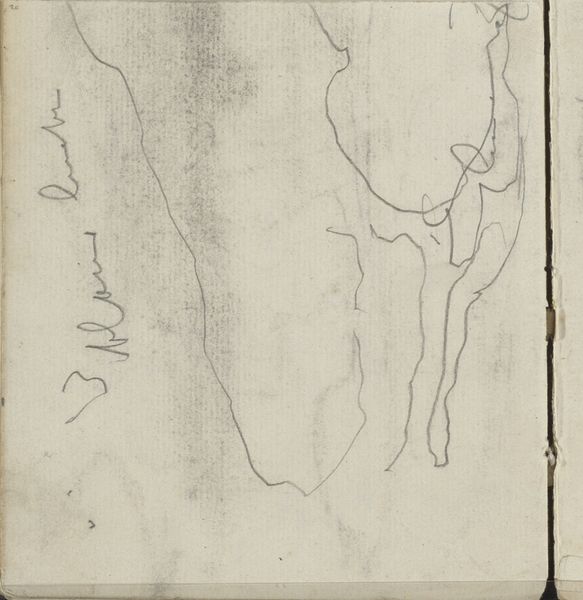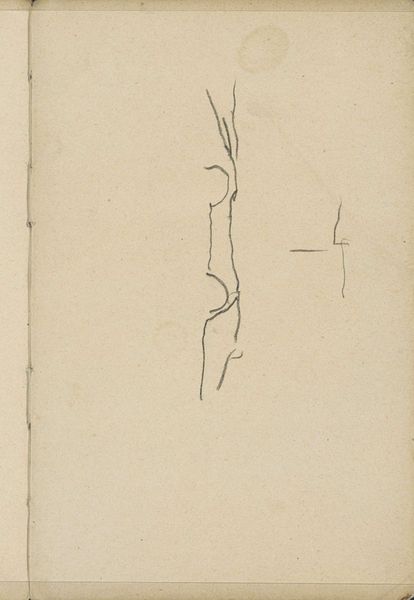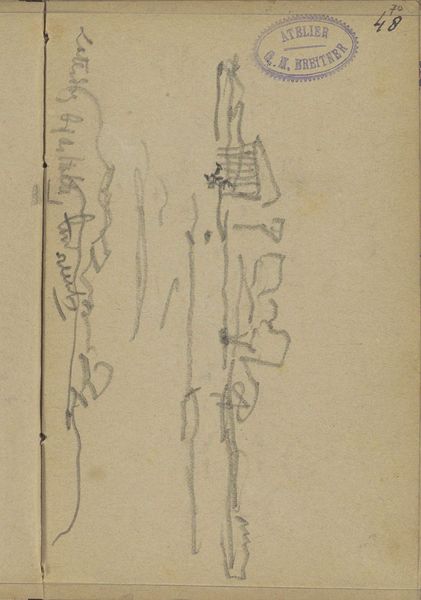
drawing, ink
#
portrait
#
drawing
#
dutch-golden-age
#
impressionism
#
ink
#
line
#
watercolor
Copyright: Rijks Museum: Open Domain
Curator: This drawing here, titled "Twee Neuzen" – "Two Noses" if you will – was rendered by George Hendrik Breitner sometime between 1884 and 1886. Breitner was really exploring impressionistic techniques even while studying masters of the Dutch Golden Age. Editor: Well, it’s stark, isn’t it? Like peering into someone’s very fleeting thought. Such minimalist means for portraiture. Are we sure it's meant to be a complete work? The visible lined paper implies, at first glance, study and process over grand unveiling, which draws one to ponder at what stage the study becomes a statement of artistic practice in itself. Curator: Breitner wasn’t really fussed with academic polish, more obsessed with capturing a quick impression, especially focusing on city life. But it is ink on paper; a very basic set of materials to explore deeper aspects about his subject's identity. Think of all of the various places these types of inexpensive tools could have been procured. Editor: You're right. It also reads as a little funny. Breitner’s reducing a person to, well, *two noses*. It's kind of cheeky, a bit absurdist even before absurdism became fashionable. Almost like a deconstruction of a portrait… I’m sensing his tongue is firmly in his cheek with this one! I wonder, what did noses mean to Breitner beyond their superficiality? Curator: Perhaps he saw in those quick studies a symbol of individuality? A rejection of idealized beauty towards capturing raw, immediate realities. Think about how cheap, accessible, and ready-made paper became and how it helped with disseminating sketches just like this for the middle classes to emulate and ponder over for themselves. This work reminds you not just what it depicts on the surface level (e.g., "noses"), but how something gets built for everyone via base level. Editor: I appreciate how this ink drawing brings attention to often invisible aspects of creative labour and artistry, which so often requires quick impressions to capture light. Perhaps he even found it subversive—elevating simple materials to places they were otherwise unseen. Breitner made the mundane quite luminous. Curator: Precisely. Breitner helps us understand the fleeting essence of modernity... Editor: Agreed. “Twee Neuzen” stays with you. The economy of expression sparks infinite contemplations.
Comments
No comments
Be the first to comment and join the conversation on the ultimate creative platform.
